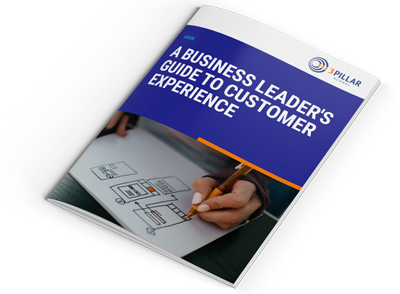August 16, 2022
What the Digitization of Customer Experience Looks Like
Customers have come to expect a customer experience that prioritizes their needs, which means that your modernization efforts must prioritize your customers’ wants to remain competitive.
The digital transformation of customer experience is an ever-evolving process that focuses on improving how customers interact with your brand. As Forbes explains, “by the end of 2022, the global CX technology spending is expected to reach $641 billion.”
However, your customers don’t think about those interactions in categories of digital vs. non-digital. Instead, they view interactions holistically, making the digital customer experience more critical now than ever.
The Importance of A Digital Customer Experience (CX)
While customers want things to be flawless, they’re typically willing to forgive minor hiccups as long as your company doesn’t fail miserably. Salesforce Research tells us that 78% of customers “will forgive a company for its mistake after receiving excellent service.”
However, while customers won’t penalize you for having to jump through an extra hoop or two, they will consider jumping ship if a competitor offers a significantly better customer experience. To that end, the importance of an exceptional digital customer experience is a competitive advantage and cannot be overstated.
The Digital Employee Experience
The digital transformation of customer experience isn’t limited to customers. Streamlining the customer journey and focusing on modernization throughout the business improves the employee experience by allowing them to focus on strategic priorities.
When your team has less “busy work” on their plates, each person can devote more time to activities in their zone of genius that drive revenue or productivity for the company. Simultaneously, with less frustration and friction around repetitive tasks, you can develop a customer service-oriented culture that creates positive and holistic customer experiences.
Incorporate User Experience (UX) Research
Because the market is constantly changing, companies must use The Product Mindset as a lens for digitizing the customer experience. Doing so means understanding that the digital transformation of customer experience is not a one-and-done project but an ongoing and iterative process.
This iterative approach allows companies to minimize time to value and solve for problems that customers actually care about. Or, at a minimum, you can create solutions that enhance how you serve customers. So how can you know which issues you have, let alone which to solve first?
It may be less about “problems” per se than opportunities to do better. For example, it could mean creating a more secure app experience, simplifying the user interface, or making it easier for your customers to interact with your company. Alternatively, it may mean using tools like artificial intelligence or machine learning to improve customer support or create a consistent experience everywhere customers interact with your company.
Back to the original question, how can you identify and prioritize these opportunities? It starts with asking your customers about their experiences with your brand. User data like heatmaps, email open rates, support tickets, and conversion rates also give you insights into your strengths and weaknesses. In addition to reviewing historical data, you can also use real-time information to pinpoint touchpoints causing the most friction and prioritize them for improvements.
How to Create a Digital Customer Experience
The digital transformation of customer experience looks different for every company, depending on your current level of digitization, customer needs, and strategic goals. Regardless of your company size, User/UX research should form the foundation of your digital transformation and customer experience strategies. While your specific approach may differ based on your goals, these steps will help you create a strategy for transforming your digital customer experience.
- Map out the customer journey, and include every digital and non-digital touch point to get a feel for how customers engage with your brand.
- Audit your CX to identify your strengths and weaknesses.
- Analyze user data, customer surveys, and real-time feedback to identify holes in your process or CX.
- Explore competitor reviews to find opportunities where you can stand out.
- Review trends in digital transformation to uncover new growth opportunities.
- Develop a list of modernization opportunities and evaluate them through the lens of an effort-value matrix.
- Prioritize the opportunities that can create the most value with the least effort.
- Create a roadmap for implementation.
- Have your development team estimate a timeline and get the green light from your key decision makers.
These types of User/UX Research are invaluable for ensuring that your customer focuses on your users’ needs while simultaneously balancing your company’s needs. The resulting data helps you focus on the initiatives that drive the most value for your customers, allowing you to create the best possible customer experience.
With an actionable strategy in place, your priority can shift to implementing your roadmap and iterating based on customer feedback.
Prioritizing the Digital Transformation of Customer Experience
Digital customer experience is not a passing trend. While not every effort needs to focus exclusively on customer needs, it cannot sacrifice customer experience for operational efficiencies. You can ensure your customers come first by using their experience as a lens for your digital transformation initiatives. The resulting customer loyalty will ensure your business thrives for years to come.
3Pillar Global has deep expertise in using digital transformation to deliver an exceptional customer experience. Contact us today to learn how we can help you modernize your business and prioritize your customers’ needs.

Special thanks to these members of FORCE, 3Pillar’s expert network, for their contributions to this article.
FORCE is 3Pillar Global’s Thought Leadership Team comprised of technologists and industry experts offering their knowledge on important trends and topics in digital product development.
 CJ Jordy
CJ Jordy The Revenue Cycle Playbook:
The Revenue Cycle Playbook: